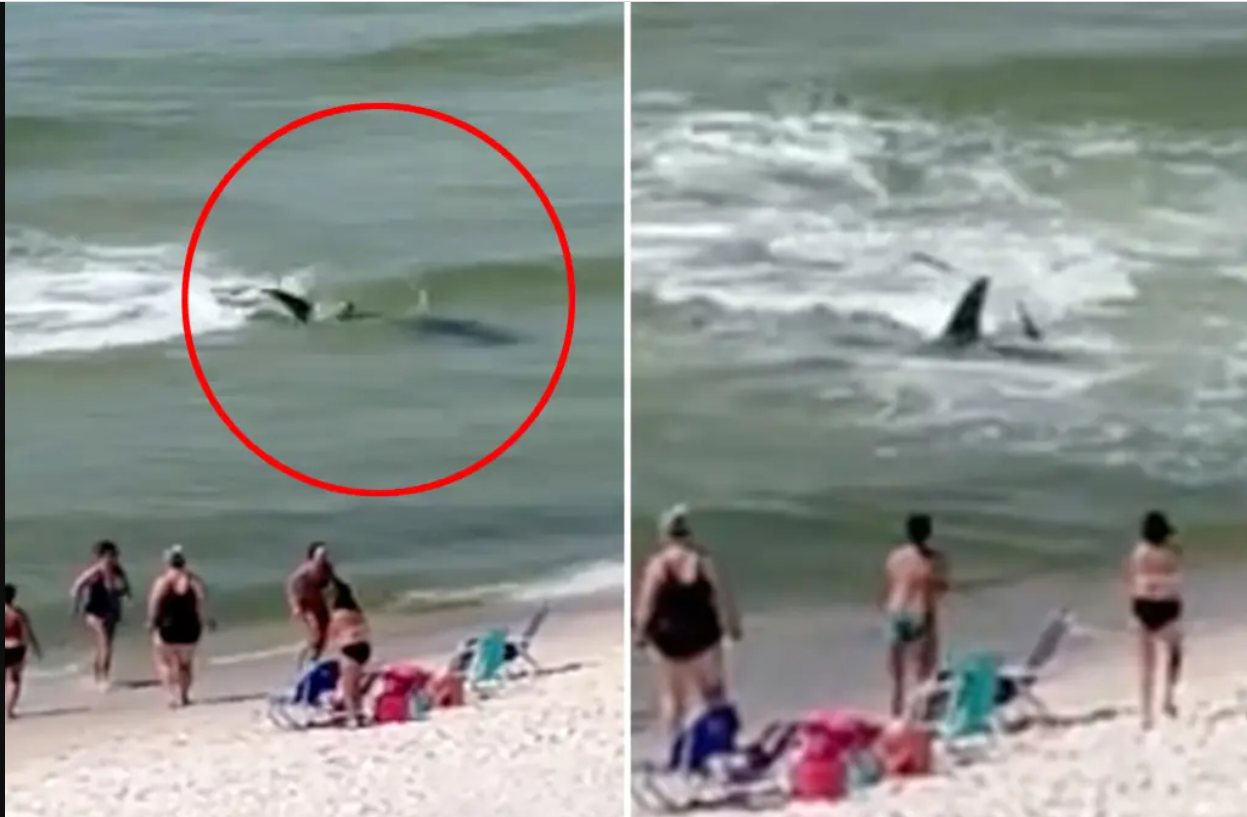
Vladimir Popov Shark Attack: How to Recognize Shark Presence at the Beach and Ensure Safety
A recent shark attack happened to Vladimir Popov, and this has made people more worried about safety at the beach and the importance of being aware of sharks in coastal areas. This article wants to give helpful advice in simple language about how to recognize signs that there might be sharks around and how to stay safe.
By giving people basic information about how sharks behave and telling them what they can do to be careful, we can make sure that everyone has a safer time when they go to the beach.
Understanding Shark Behavior
Habitats and Distribution: Sharks can be found in oceans worldwide, but some species have a preference for specific regions. For instance, the great white shark is often associated with coastal areas where seals and sea lions reside. By knowing the general habitats and distribution patterns of different shark species, we can gain insights into the likelihood of encountering sharks in certain areas.
Feeding Patterns and Prey
Sharks are opportunistic predators that primarily feed on fish and marine mammals. For example, if an area has a large population of fish, it may indicate an ecosystem that supports marine life, potentially attracting sharks. Understanding the prey species present in an area can help us assess the likelihood of sharks being nearby.
Seasonal and Migration Patterns
Certain shark species exhibit seasonal migrations. One such example is the tiger shark, which tends to move closer to shore during the summer months when warmer waters attract their prey. By recognizing these patterns, beachgoers can be more aware of potential shark activity during specific times of the year.
Identifying Potential Shark Presence
Environmental Factors: Various environmental factors can increase the chances of encountering sharks. For instance, sharks are known to be more active in warmer waters. Additionally, reduced water visibility due to factors such as algae blooms or sediment runoff can make it harder to spot sharks. Being aware of these environmental conditions can help beachgoers make informed decisions about entering the water.
Bird and Marine Life Behavior
Observing the behavior of birds, dolphins, and other marine animals can provide valuable insights into potential shark presence. For example, if seabirds suddenly take flight or marine animals begin behaving erratically, it could indicate the presence of a predator in the vicinity. Such behavioral cues can serve as early warning signs for beachgoers to exercise caution.
Fishermen’s Knowledge
Local fishermen who frequent an area often possess firsthand knowledge about shark activity. By engaging in conversations with them, beachgoers can gather valuable information about recent shark sightings or areas known to have higher shark populations. This shared knowledge can help individuals make informed decisions about where and when to swim.
Beach Safety and Precautionary Measures
Lifeguard Vigilance and Communication: Lifeguards play a vital role in ensuring beach safety. Their training equips them with the ability to identify potential shark activity and respond effectively. Lifeguards should maintain a constant watch over the water and promptly communicate any sightings or concerns to beach visitors. By working in close collaboration with lifeguards, beachgoers can stay informed and take necessary precautions.
Public Education and Awareness
Public education and awareness campaigns are essential in promoting shark safety. Signs and informational materials placed at beach entrances can provide valuable guidance on shark behavior, preventive measures, and what to do in case of an encounter. These campaigns can also extend beyond the beach, reaching schools, community centers, and media outlets to disseminate knowledge and encourage responsible beach behavior.
Personal Safety Practices: Individuals can take several precautionary measures to reduce the risk of shark encounters and ensure their safety at the beach
3.3. Personal Safety Practices: One of the most effective ways to enhance personal safety at the beach is to follow these simple practices:
- Swim with others: It is advisable to swim in groups rather than alone. Sharks are less likely to approach a larger group of people, making it an important safety measure.
- Swim during the day and in designated areas: Sharks are more active during dawn, dusk, and nighttime. By swimming during daylight hours, you decrease the chances of encountering them. Additionally, it is crucial to swim within the designated areas marked by lifeguards, as these areas are generally safer.
- Avoid wearing shiny or brightly colored items: Sharks are attracted to shiny objects and bright colors that resemble their prey. It is best to refrain from wearing reflective jewelry or swimsuits with vibrant patterns that may draw unnecessary attention.
- Stay close to shore: While enjoying the water, it is recommended to stay relatively close to the shore. Sharks tend to swim in deeper waters, so by staying near the shoreline, you reduce the likelihood of encountering them.
- Observe marine life behavior: Pay attention to the behavior of birds, dolphins, seals, and other marine creatures. If you notice these animals behaving unusually, such as frantically swimming away or gathering in large numbers, it could indicate the presence of a predator. In such cases, it is best to exercise caution and consider exiting the water.
- Avoid swimming near areas with seals or sea lions: Sharks are known to prey on seals and sea lions. Therefore, it is advisable to avoid swimming in areas where these marine mammals are present, as their presence can attract sharks.
- Be cautious if bleeding: Sharks have a heightened sense of smell and can detect even small amounts of blood in the water. If you have an open wound or are bleeding, it is advisable to avoid swimming until the bleeding has stopped, as it could potentially attract sharks.
- Stay informed and follow local guidelines: Stay updated on any local shark advisories or warnings. Pay attention to information provided by lifeguards, signage, or local authorities regarding recent shark sightings or specific safety measures.
Conclusion
Understanding how to recognize potential signs of shark presence and adopting appropriate safety measures are crucial for beachgoers. By educating oneself about shark behavior, being aware of environmental factors, and following precautionary measures, individuals can reduce the risk of shark encounters and ensure a safer beach experience. Remember, knowledge and vigilance are key to enjoying the ocean while prioritizing personal safety.




